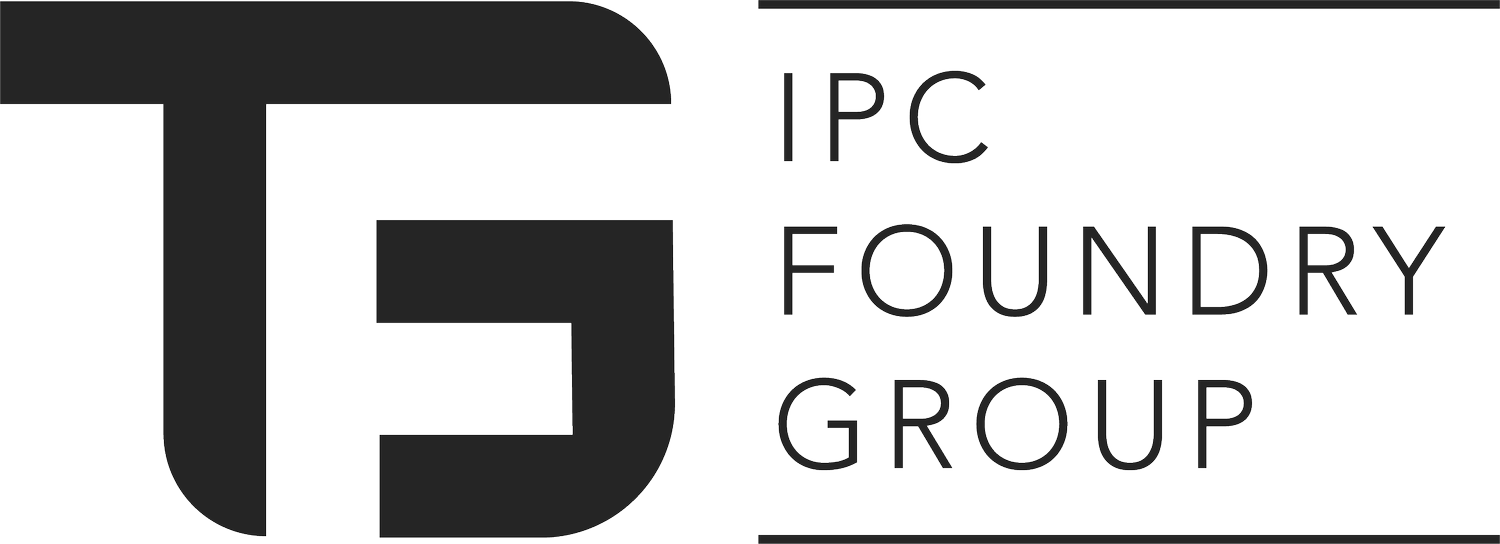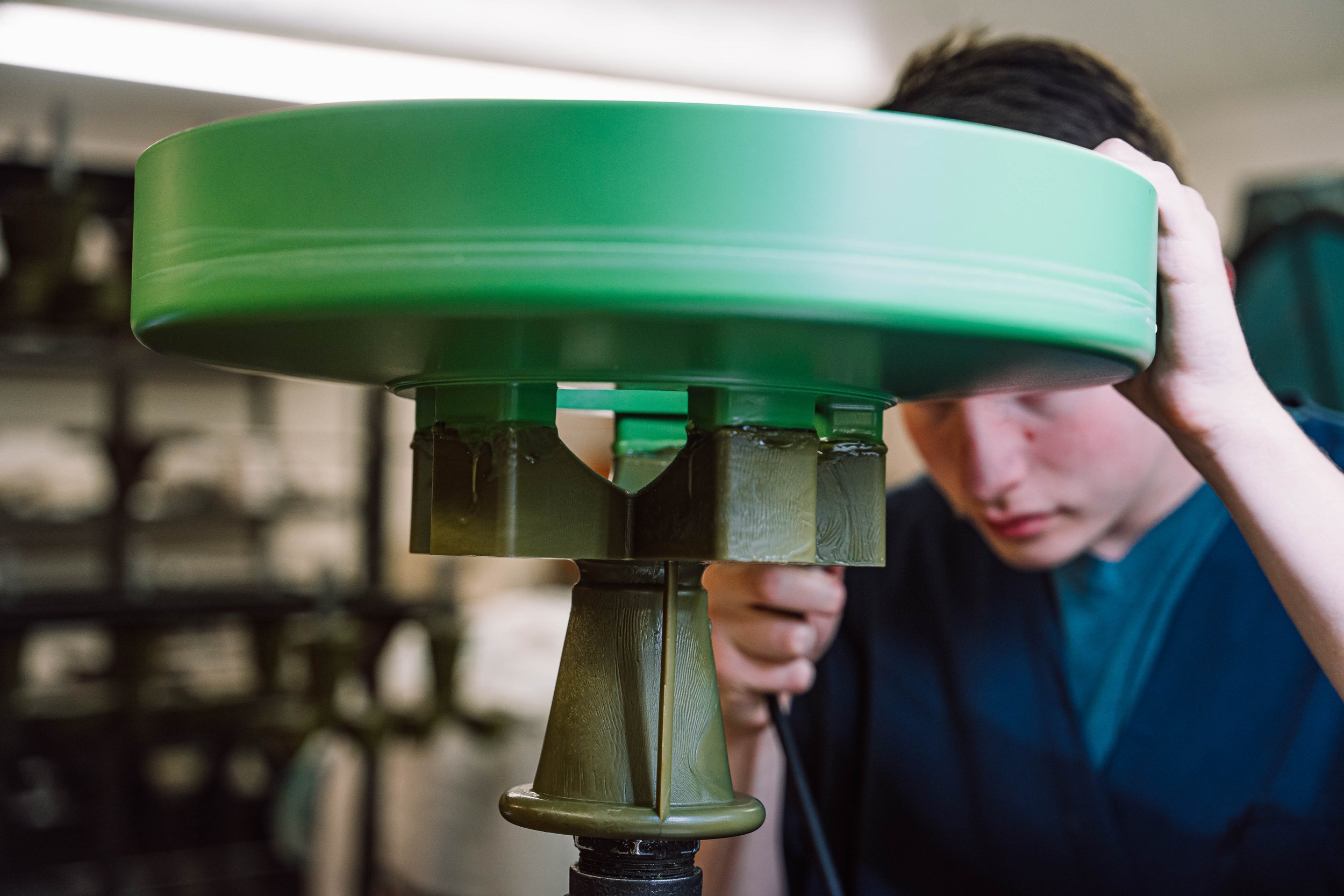Precision Casting Tooling FAQs:
The Precision Casting Process is a multi-step manufacturing method used to produce hundreds or even thousands of identical metal components. In today's article, we'll answer more FAQs about precision casting with a focus on tooling. Let's get into it!
Freshly injected wax parts utilizing tooling during the precision casting process
What is Tooling?
In precision casting, tooling refers to the molds, dies, and associated equipment used to create wax patterns, which serve as the basis for casting metal components; this includes the mold or model of a part, tree & gate components, and additional forms needed to cast your part perfectly.
Tooling is critical to achieving high precision, repeatability, and efficiency in the casting process.
You can think of tooling sort of like a muffin tin. To get round, uniform muffins, you use a trusty muffin tin and pour the batter in. Similarly, the tooling mold serves as a reverse cavity of your part with all of its intricacies (internal cavities, surface patterns, embedded logos, spirals, overhangs, and more). Instead of muffin batter, your tooling is filled with wax during the injection molding phase of the casting process.
Later in the process, these wax molds will be dipped in a ceramic slurry and form a hard outer shell for metal pouring - eventually creating a perfect 1:1 recreation of your metal component.
You can compare tooling patterns/dies in casting with a muffin tin in baking.
What types of tooling are used in Precision Casting?
A few different types of tooling are used to facilitate the casting process.
Wax Injection Dies (Wax Pattern Tooling)
Toolings are made from aluminum or steel. These dies are used to inject wax into a cavity that forms the shape of the final cast part.
They are precision-machined to ensure the wax patterns are accurate and consistent.
The dies can include multiple cavities for high-volume production.
You can think of these as the primary tooling used on your part (like our muffin tin example)
These tools are purpose-built for reuse and production en masse.
Core Dies (If Needed)
Used when internal cavities or complex geometries are present in the final casting.
These help create ceramic or soluble wax cores that are assembled into the main wax pattern.
Gating and Runner System Tooling
Additional tooling is designed to form wax runners, gates, and sprues.
These structures facilitate the proper flow of molten metal into the mold.
(See image below for an example of a gate)Effective gating enables a foundry to push any imperfections up and out of your metal component.
Depending on the size of your part, gates also allow for casting multiple parts at a time, dramatically reducing your production time.
Ceramic Shell Tooling
While not a physical die, this includes the ceramic shell-building process, where wax patterns are repeatedly coated in ceramic slurries to form the final mold.
Fixture and Inspection Tooling
Jigs and fixtures are used during assembly, wax welding, and inspection to ensure dimensional accuracy.
Checking gauges, CMM (coordinate measuring machine) fixtures, and other quality control tools help maintain precision.
A gate (darker green material) being added to a wax pattern.
Why is Tooling so Expensive?
Precision casting tooling is expensive due to several factors, including material costs, CNC machining, and the complexity of the design. We'll touch on a few of these cost components below, but, in short, opting for investment casting requires an investment in mass production. To produce hundreds or thousands of metal components like clockwork programmers, machinists, and QC departments all come together to create these dies. The upfront cost can give a little bit of sticker shock, but the long-term savings and quality are well worth the initial cost.
1. Precision CNC Machining
Investment casting relies on tight tolerances and intricate details, requiring CNC machining and other manufacturing techniques to create the wax injection dies.
This tooling must provide high repeatability, requiring exceptional accuracy during development. Consequently, this increases machining time and cost.
2. Material Costs
Tooling typically uses high-quality aluminum or steel that allows foundry workers the ability to use the dies time and time again. During onboarding, engineers may have to refine and tweak designs, which can increase material costs.
3. Complexity of Design
Many investment cast parts have complex geometries, undercuts, and internal cavities, requiring multi-part tooling, slides, or inserts. Getting tooling correct helps prevent headaches and part failures before going to market.
Additionally, some tooling includes movable cores, collapsible sections, or similar components to accommodate intricate designs, increasing production complexity and cost.
4. Lead Times and Labor Cost
The design and manufacture of tooling can take several weeks to months:
First, engineers work with you to create precise 3D models. Following this, the tooling must undergo prototyping, testing, and refinement before full-scale production. Getting it right takes time. Skilled labor during each of these steps will add to your final cost.
A quick note on prototyping, testing, and refinement:
Back to our muffin example, during heating in the oven and cooling on your countertop, the muffin batter will expand and contract, creating some variance in size from the original tin. Casting has similar variances, and engineers must account for and adjust tooling for shrinkage, thermal expansion, and the nuanced material properties for each alloy utilized. This refinement requires trial and error to get the perfect tooling for your production run.
5. Custom Made Tooling
Unlike sand casting, where patterns can be reused with modifications, investment casting tooling is custom-made and purpose-built for each specific part. If design changes occur, the tooling may require reworking or complete replacement, increasing costs.
6. Rapid Prototyping and First Articles (Optional)
Many precision casting foundries utilize 3D printing to iterate and make prototypes for approval and internal testing. 3D printing is fast and can dramatically reduce the pre-production window. Once parts are approved, 3D print models can be utilized to aid in creating final tooling.
7. Additional Considerations
Tooling can also include:
Ejection systems to remove the wax patterns without damaging them.
Heating or cooling channels to maintain optimal wax flow.
Multiple cavities. Think of this as creating a mold that forms multiple parts at a time. This can add complexity and cost but can be incredibly cost and time-effective for bulk manufacturing.
What are the Advantages of Precision Casting Tooling?
Tooling's costs can be off-putting for projects with smaller-scale production volumes. For smaller-scale projects, machining or sand casting may be a better method.
However, for projects with complex designs or with medium to high volume, precision casting is unmatched in its price-per-part value.
Perks of Precision Casting
High precision, near-net-shape casts mean fewer secondary finishing operations and cost savings
Reduced material waste. Tooling allows for precise pours and dramatically reduced waste. If green manufacturing is important to your business, precision casting is a good option.
Complex Geometries: Create parts with internal cavities, overhangs, spirals, beautiful surface finishes, embedded logos/text, and more with investment casts. These complex designs are impossible or VERY expensive with other metal forming methodologies.
High repeatability: Perfectly reproduce your part hundreds or thousands of times with tooling.
Next-Level Consistency: Precision casting allows for tolerances in the thousandths of inches. Rest easy knowing your components will be perfect for your application.
Hit the Ground Running on Future Production Cycles: With tooling in place, produce parts quickly whenever you need them with a significantly reduced lead time for all future production runs. Need to remake a die? With the previous models and learning, engineers can get you back on track lightning-fast.
A die installed into a wax injection machine, ready for production.
Conclusion
Tooling is one of the most critical steps of the precision casting process. It enables product design teams to quickly and consistently produce thousands of metal components. While upfront costs can be a bit daunting, they are well worth the quality, bulk production volumes that can be achieved through precision casting.
If you'd like to learn more about Precision Casting or how IPC Foundry Group can help you save time and money on your next production cycle, Contact us today!




